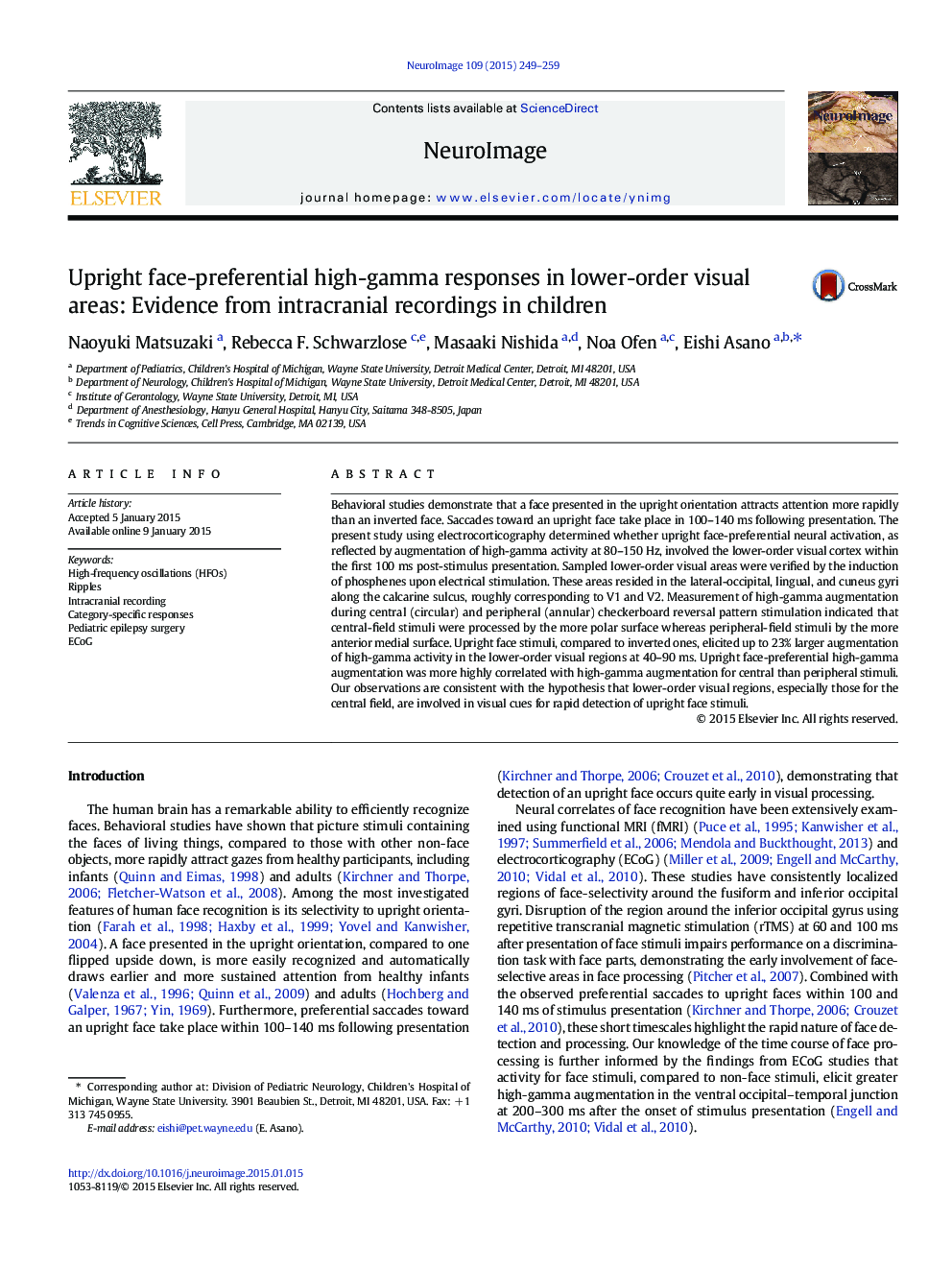| Article ID | Journal | Published Year | Pages | File Type |
|---|---|---|---|---|
| 6025612 | NeuroImage | 2015 | 11 Pages |
Abstract
Behavioral studies demonstrate that a face presented in the upright orientation attracts attention more rapidly than an inverted face. Saccades toward an upright face take place in 100-140Â ms following presentation. The present study using electrocorticography determined whether upright face-preferential neural activation, as reflected by augmentation of high-gamma activity at 80-150Â Hz, involved the lower-order visual cortex within the first 100Â ms post-stimulus presentation. Sampled lower-order visual areas were verified by the induction of phosphenes upon electrical stimulation. These areas resided in the lateral-occipital, lingual, and cuneus gyri along the calcarine sulcus, roughly corresponding to V1 and V2. Measurement of high-gamma augmentation during central (circular) and peripheral (annular) checkerboard reversal pattern stimulation indicated that central-field stimuli were processed by the more polar surface whereas peripheral-field stimuli by the more anterior medial surface. Upright face stimuli, compared to inverted ones, elicited up to 23% larger augmentation of high-gamma activity in the lower-order visual regions at 40-90Â ms. Upright face-preferential high-gamma augmentation was more highly correlated with high-gamma augmentation for central than peripheral stimuli. Our observations are consistent with the hypothesis that lower-order visual regions, especially those for the central field, are involved in visual cues for rapid detection of upright face stimuli.
Keywords
Related Topics
Life Sciences
Neuroscience
Cognitive Neuroscience
Authors
Naoyuki Matsuzaki, Rebecca F. Schwarzlose, Masaaki Nishida, Noa Ofen, Eishi Asano,
